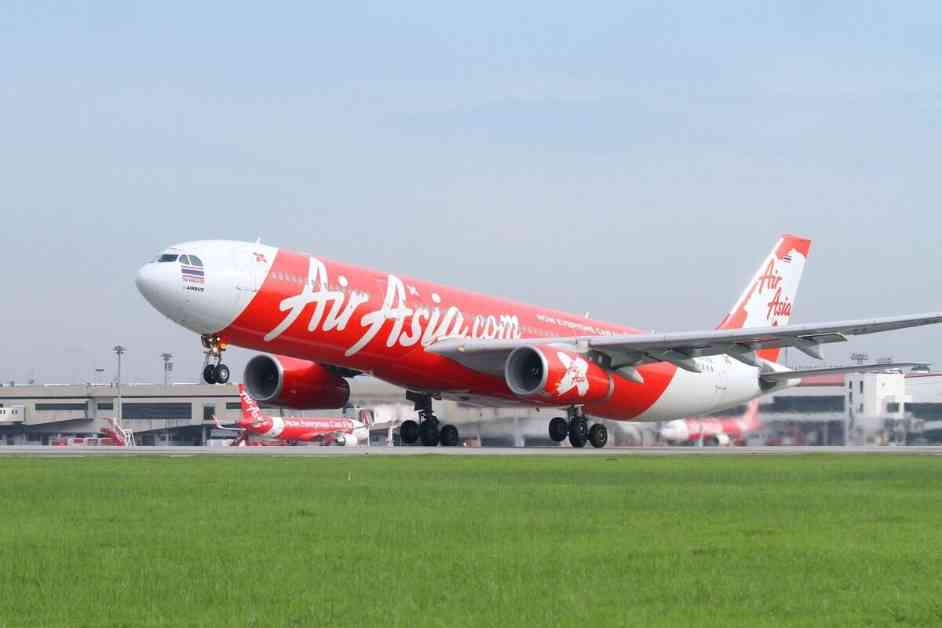Thai AirAsia, a subsidiary of Asia Aviation (AAV), has made significant strides in its operational and financial performance in 2024. With impressive growth in revenue, passenger traffic, and market share, the airline is positioning itself as a key player in the region’s aviation industry. Let’s take a closer look at Thai AirAsia’s success story and its plans for the future.
Financial Success and Operational Growth
In the first half of 2024, Thai AirAsia reported a remarkable financial recovery, with revenue from sales and services reaching 25,279 million baht, representing a 32% year-on-year increase. The airline’s profit from core operations saw a staggering 1,015% growth, soaring to 1,950 million baht from 175 million baht in the previous year. This impressive leap was supported by a 41% increase in EBITDA, totaling 5,003 million baht.
Passenger traffic also saw a significant uptick, with 10.4 million travelers taking to the skies in the first half of the year, marking a 13% increase from the previous year. Thai AirAsia’s average load factor stood at an impressive 92%, driven by the expansion of its fleet to 57 aircraft.
Santisuk Klongchaiya, the CEO of Asia Aviation and Thai AirAsia, attributed the airline’s success to the positive trends in Thailand’s tourism industry. He noted that travelers from China, Malaysia, and India were among the top arrivals to the country, with Thai AirAsia serving as the primary airline for these nationalities due to its extensive network connecting Thailand to key destinations in China and India.
Continued Expansion and Future Plans
Despite the challenges posed by the fluctuating exchange rates in the second quarter of 2024, Thai AirAsia maintained strong performance, reporting a net profit of 84 million baht. The airline’s average load factor remained high at 91%, with 5 million guests transported during the quarter. Domestically, Thai AirAsia commands a significant market share of 39% and continues to expand its international reach with new routes to destinations like Visakhapatnam (India) and Okinawa (Japan).
Looking ahead, Thai AirAsia shows no signs of slowing down. The latter half of 2024 will see the introduction of new routes such as Phu Quoc (Vietnam) and Hyderabad (India) from Don Mueang, as well as connections from Phuket to Siem Reap (Cambodia), Chennai, and Kolkata (India). These expansions are set to support the airline’s goal of serving 20 to 21 million guests, boosting revenue by 20 to 23%, and growing its fleet to 60 aircraft.
Additionally, Thai AirAsia’s acquisition of two Airbus A321neo aircraft with a 236-seat capacity will help cut operational costs, reduce fuel consumption, and generate more revenue through additional seats. This strategic move underscores the airline’s commitment to efficiency and growth in a competitive market.
In conclusion, Thai AirAsia’s successful transformation in 2024 exemplifies its resilience, adaptability, and strategic vision in navigating the challenges of the aviation industry. With a strong financial performance, expanding route network, and focus on operational excellence, the airline is well-positioned to continue its upward trajectory and solidify its position as a leading low-cost carrier in the region.
Impressive Financial Recovery
Thai AirAsia’s financial results for the first half of 2024 showcased a remarkable recovery, with revenue from sales and services reaching 25,279 million baht, marking a 32% year-on-year increase. The airline’s profit from core operations skyrocketed by an astounding 1,015%, reaching 1,950 million baht compared to 175 million baht in the previous year. This impressive growth was supported by a 41% increase in EBITDA, totaling 5,003 million baht.
Strong Passenger Traffic and Market Share
In addition to its financial success, Thai AirAsia experienced a surge in passenger traffic, with 10.4 million travelers taking to the skies in the first half of 2024, a 13% increase from the previous year. The airline’s average load factor remained high at 92%, driven by the expansion of its fleet to 57 aircraft. Domestically, Thai AirAsia commands a notable 39% market share and continues to strengthen its international presence with new routes to key destinations.
Future Expansion and Growth
Looking forward, Thai AirAsia has ambitious plans for the latter half of 2024, including the introduction of new routes to popular destinations in Vietnam, India, Cambodia, and more. The airline aims to serve 20 to 21 million guests, increase revenue by 20 to 23%, and expand its fleet to 60 aircraft. With the acquisition of new Airbus A321neo aircraft, Thai AirAsia is poised to enhance operational efficiency, reduce costs, and drive revenue growth through additional seating capacity.


















